- By Mareca Hatler
- InTech
Summary
ISA100 Wireless adoption increased four times faster than WirelessHART, with growing interest in IoT platforms and LPWANs
By Mareca Hatler

Short-range wireless mesh technologies, such as WirelessHART and ANSI/ISA-100.11a\, as well as Wi-Fi, Bluetooth, and proprietary solutions, will make up the majority of the market over the next five years. Adoption of Low-Power Wide Area Network (LPWAN) technologies, such as LoRa, LTE-Cat-M1, and LTE-Cat-NB1 (NB-IoT) will increase even faster.
In November 2016, ON World collaborated with ISA for an extensive survey of wireless sensor networks on the IoT. We surveyed more than 180 industrial automation vendors, end users, systems integrators, and service providers. In this article, we compare the major findings from this survey with a previous survey from the last quarter of 2014.
Accelerating WSN adoption
Three in five respondents are currently pilot testing, deploying, or are involved with commercial WSN deployments. Twenty-eight percent have deployed more than 1,000 nodes, compared with 14 percent in our previous survey.
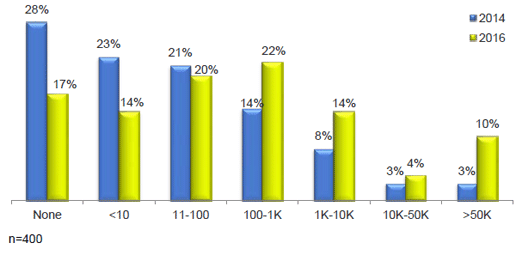
Wireless mesh deployments increase
Eighty percent of respondents who are involved with process automation have deployed at least some wireless mesh WSN nodes, up from 62 percent in the previous survey.

In the current survey, there was a slight drop in the percent of respondents using WirelessHART. Adoption of ISA100 Wireless increased by 36 percent over the past two years.
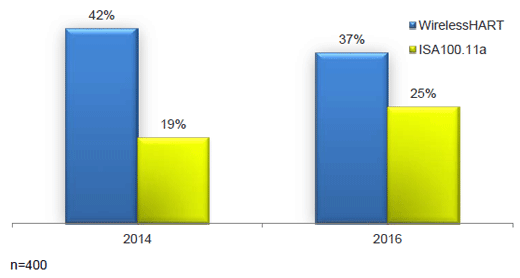
Preferred standards approach
WirelessHART continues to be the preferred standards approach going forward, but 25 percent prefer ISA100 Wireless or a hybrid strategy. The ability to support a star topology, faster response timing, and application tunneling makes ISA100 suited for a growing number of markets, such as gas detection, steam trap monitoring, and connecting control systems to offshore oil platforms over multiple kilometers.
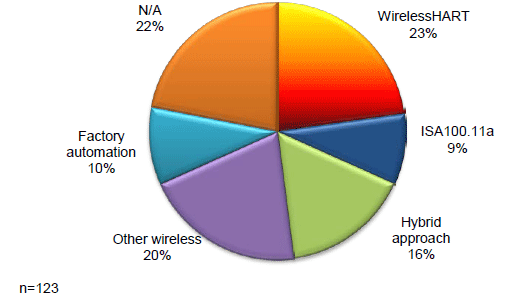
Most likely applications
For those planning future WSN applications, 55 percent are targeting machine heath and other types of asset monitoring, compared with 38 percent in the previous survey.
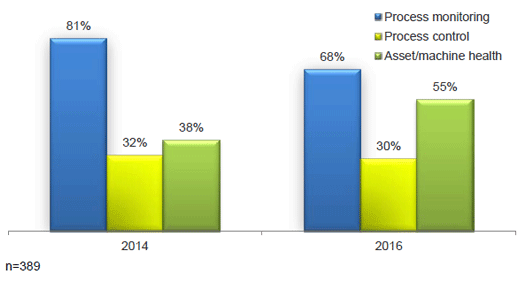
Most important features
After data reliability and security, "no battery changes" and "low costs" are rated the most important WSN features. Both of these were rated as more important in our current survey, while standards and IP addressability were rated as less important.
*Percent important or most important
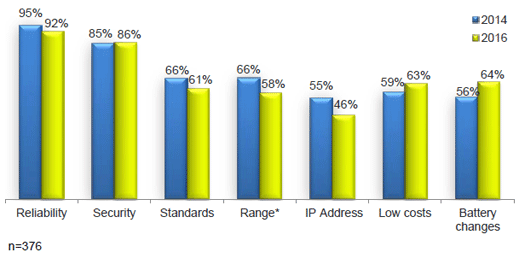
Satisfaction levels
Satisfaction levels increased overall. For respondents targeting process automation, however, satisfaction levels decreased slightly, with the biggest drop in satisfaction for battery life, scalability, and costs.
*Percent satisfied or most satisfied for respondents targeting process automation
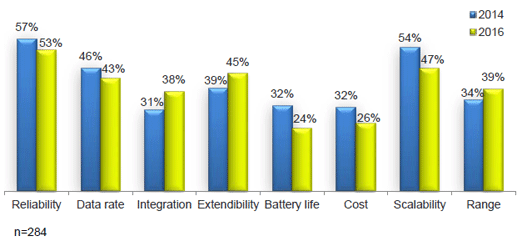
Strategic investments
Interest in Industrial IoT has accelerated over the past two years. Two-thirds view IoT platforms as "important" or "most important," which is two times more than in our previous survey.
*Percent important or most important
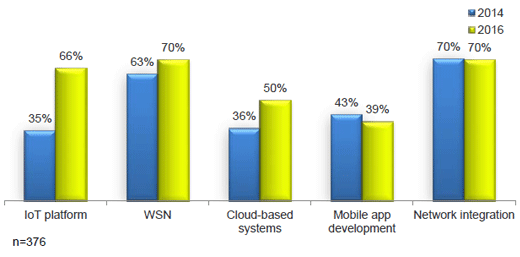
Cloud platform adoption
Nearly half of all respondents and 30 percent of end users are using a cloud IoT platform, such as AWS, Microsoft Azure, IBM BlueMix, or Google Cloud. Cloud IoT platforms combined with ongoing advances in radio frequency transceiver power consumption and sensitivity have enabled Low-Power Wide Area Networks, a growing segment of WSN solutions.
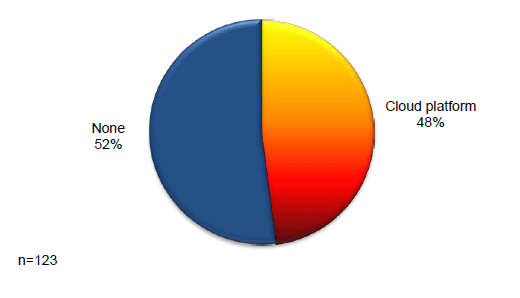
Low-Power Wide Area Networks
LPWAN technologies, such as Sigfox, LoRa, RPMA, and LTE-Cat-M1 and LTE-Cat-NB1 (NB-IoT), are blindsiding existing wireless sensor network technologies with multikilometer network ranges, multiyear battery lifetimes, and cloud-integrated network stacks. In addition to reducing access costs significantly with very small transmission payloads and the ability to scale to thousands of nodes per gateway, an LPWAN can manage network complexity in the cloud or edge server rather than from LAN-based network controllers.
Although LPWANs will challenge existing industrial WSN technologies, especially for mobile assets and for applications in remote and difficult-to-reach areas like oil fields, pipelines, mines, ranches, and pump stations, the biggest impact will come from enabling new markets and services. A few examples are smart buttons, tracking and locating low- to mid-value assets, and remotely monitoring processes, equipment, and other assets for which it was not previously economically feasible, such as irrigation, crops, and animal health.
Our survey found accelerating development of LPWAN solutions with two in five respondents researching, developing, or currently offering LPWAN products and services.
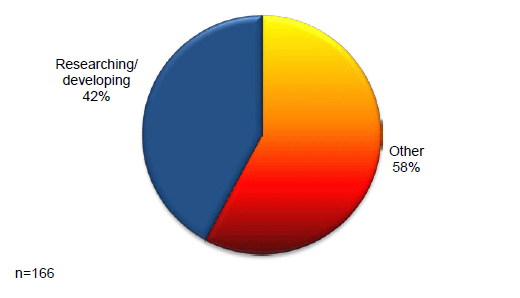
Of the respondents developing LPWAN products, three-quarters are applications that are not feasible with existing wireless IoT technologies.
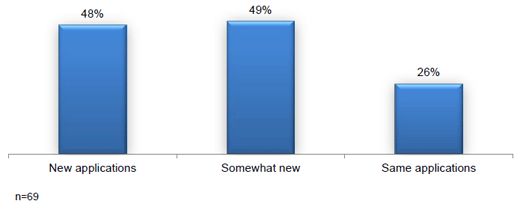
One in three survey respondents believe LPWANs will displace 40 percent or more of existing WSN technologies within the next decade. They see LPWAN as having the biggest effect on electric power, oil and gas, and water and wastewater. In addition, respondents had the most faith in LoRa. The highest number of respondents thought it would have a significant share of the LPWAN market in 10 years, followed by LTE-M1 and NB-IoT.
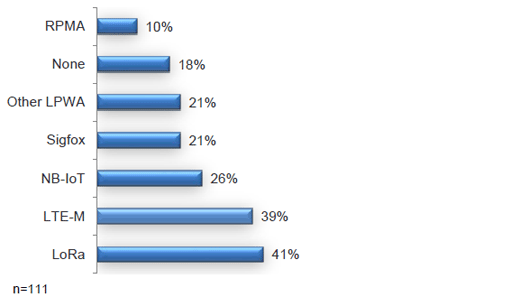
The biggest IoT concerns are network costs, complexity, and security. WSN technologies, such as ISA100 Wireless and LPWANs, are enabling seamless system integration, end-to-end security, and cloud-based application development. Our ongoing research and surveys will bring further insights about the latest developments for industrial wireless sensing and IoT.
Reader Feedback
We want to hear from you! Please send us your comments and questions about this topic to InTechmagazine@isa.org.


